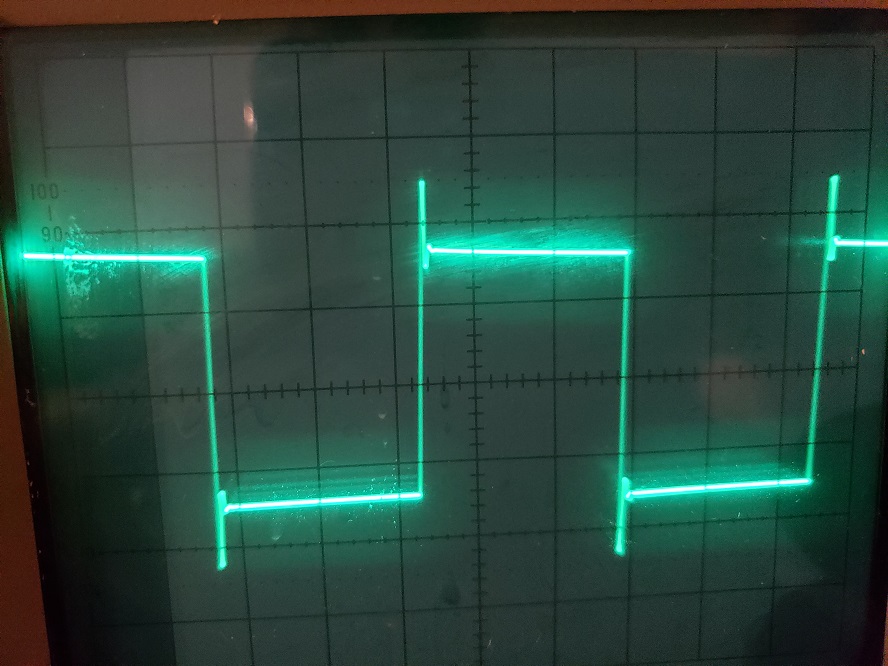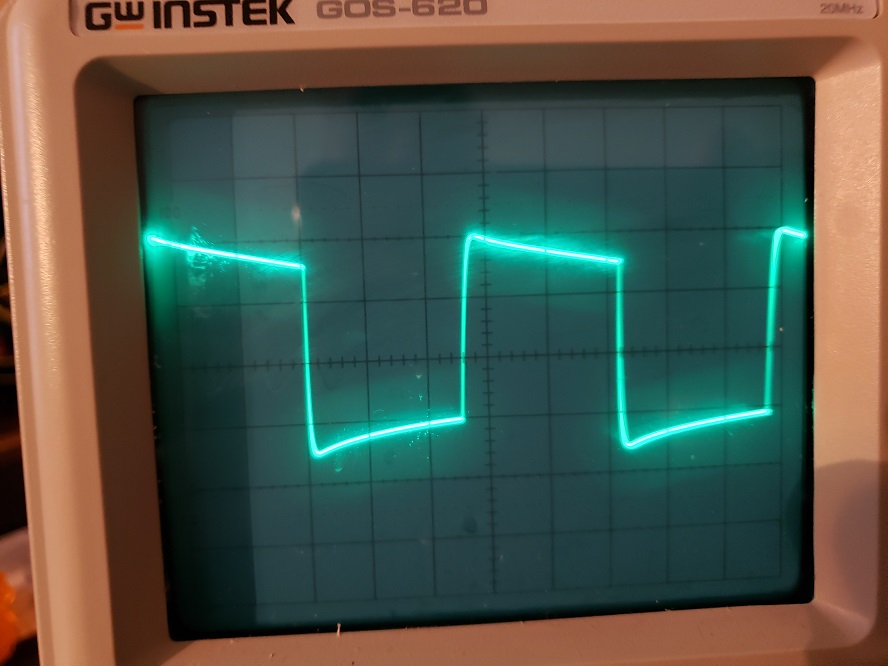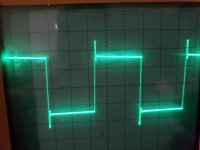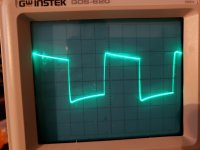I have a modified Hagerman Cornet 2 that I installed Cinemag CM-1254 step up transformers in. I decided to run a square wave through the transformer and scope it (I used to be a CET in the 70s and bought an o-scope to play with a while back) I noticed some ringing and wondered what I can do to flatten it. I have adjustable input impedance and the Cinemags are wired 1:10.
In the pic the impedance was at 29.9k so the reflected load would be 299ohms. I have a Hana SL with 30ohms impedance so for the test I wired in a 32ohm resistor.
Although I have had training it has been a long time since I have done this sort of stuff, so please excuse my ignorance.

In the pic the impedance was at 29.9k so the reflected load would be 299ohms. I have a Hana SL with 30ohms impedance so for the test I wired in a 32ohm resistor.
Although I have had training it has been a long time since I have done this sort of stuff, so please excuse my ignorance.
Attachments
A suitable RC across the secondary will take care of this. Often the data sheet will have a suggestion.
Cinemag also specs a test secondary load resistance, which will also serve the same purpose.
Cinemag also specs a test secondary load resistance, which will also serve the same purpose.
Last edited:
Not unusual for an unterminated transformer. An RC network across the secondary can be used to dampen the ringing. You might ask Cinemag if there are recommended parts values.
EDIT: Rayma beat me to it, but if nothing on the datasheet then probably easy to ask Cinemag about it.
EDIT: Rayma beat me to it, but if nothing on the datasheet then probably easy to ask Cinemag about it.
Thanks, the transformer was in circuit just not connected to the cartridge, hence the 32ohm resistor going from input to ground. The secondary was connected as normal to a 29.9k load. Does that make a difference?
Thanks, the transformer was in circuit just not connected to the cartridge, hence the 32ohm resistor going from input to ground. The secondary was connected as normal to a 29.9k load. Does that make a difference?
Yes, check the data sheet for the spec secondary load. See how this reflects to the primary. (Remove the 32R.) If it's not too low for the cartridge, add a resistor across the input to make the rated cartridge load.
Yes, check the data sheet for the spec secondary load. See how this reflects to the primary. (Remove the 32R.) If it's not too low for the cartridge, add a resistor across the input to make the rated cartridge load.
That is what the 32R was for, to imitate the cart load.
The spec secondary load is 50k, I ran it at 47k and the waveform was about the same.
Last edited:
That is what the 32R was for, to imitate the cart load.
The spec secondary load is 50k, I ran it at 47k and the waveform was about the same.
With a 47k resisitive load, the primary Z seen by the input would be 470R.
What load do you want on the cartridge? They suggest 47k, so that would not work.
Then for a 47k cartridge load you need an open circuit on the secondary with
a suitable RC damping network across it, and a 47k resistor at the input.
Last edited:
The spec for the Hana says >400
I meant to say the 32R was to imitate the cartridge impedance, not load.
I meant to say the 32R was to imitate the cartridge impedance, not load.
Last edited:
The spec for the Hana says >400
I meant to say the 32R was to imitate the cartridge impedance, not load.
If you want to use 470R as a cartridge load, then a 47k resistor across the secondary would be suitable,
with no resistor across the input primary. If this has ringing, then an RC on the output is still necessary.
Last edited:
They suggest 47k, so that would not work.
According to the specs, the Hana SL (L=Low Ouput) recommended load should be greater than 400 ohms. The 47K suggested load is for the Hana SH cartridge, which has High output and would not need a step-up transformer at all.

47k is what the Cinemag transformer secondary is connected to, not the cartridge. Which gives 470R on the primary wired 1:10, which is what the cartridge sees.
With 47k on the secondary and no connections on the primary (except the square wave signal) this is the waveform:

Attachments
Last edited:
Impedance ratio of an ideal transformer is the square of the turns ratio. Since there is a 1:10 transformer, any loading at the secondary will appear as 100 times higher at the primary. If you want >400-ohms appearing at the primary, that means you need > 40,000-ohms at secondary, including the input impedance of the circuit you are driving.
The scope waveform you have shows some roll off at low frequencies, which will always happen with a transformer. It is possible to find the corner frequency of the roll off if you are worried about it.
The scope waveform you have shows some roll off at low frequencies, which will always happen with a transformer. It is possible to find the corner frequency of the roll off if you are worried about it.
Last edited:
Thanks, I am not really worried if that is the correct way to test the transformer with a square wave.
I actually tested it that way first but then I was told that I needed to put a load resistor on the input equal to the cartridge impedance in order the do this test accurately, that is what I was doing with the 32 R. As you can see that waveform showed ringing.
I actually tested it that way first but then I was told that I needed to put a load resistor on the input equal to the cartridge impedance in order the do this test accurately, that is what I was doing with the 32 R. As you can see that waveform showed ringing.
I suggest 32 ohm is a punishing load for many sig gennys, this may be impacting the results. I would have wired a 570 + 30 ohm series string and taken the output across the 30 ohm resistor, thus loading the genny at near 600 ohms.
Using this method experimentation has shown me that a 1000pF variable cap from a tuner plus a 30kohm multi turn resistor are sufficient to find suitable values of capacitance and resistance for several trafos, eliminating ringing or HF frequency aberrations without blunting the transient response unduly.
Using this method experimentation has shown me that a 1000pF variable cap from a tuner plus a 30kohm multi turn resistor are sufficient to find suitable values of capacitance and resistance for several trafos, eliminating ringing or HF frequency aberrations without blunting the transient response unduly.
I was told that I needed to put a load resistor on the input equal to the cartridge impedance in order the do
this test accurately, that is what I was doing with the 32 R. As you can see that waveform showed ringing.
Try a 5kHz square wave. Use a series or parallel resistor to get a source impedance of 470R
(including the generator output Z) as seen by the primary, assuming a 47k secondary load.
- Home
- Source & Line
- Analogue Source
- Cinemag 1254 ringing?

